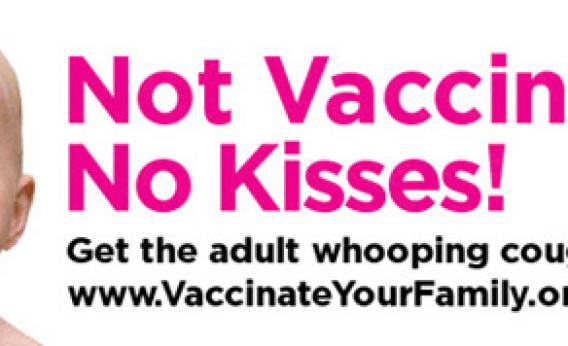Create a free profile to get unlimited access to exclusive videos, sweepstakes, and more!
UPDATE: Boulder and Vaccines

Recently, I wrote about an outbreak of pertussis in Boulder, Colo., at my daughterâs high school. Three students have come down with the disease, also known as whooping cough.
Since writing that article, I have new information thatâs very interesting. It also shows that one point I speculated on may be wrong, and for that Iâm happy ⦠though in the end my overall point remains the same.
I talked to Carol Helwig, a public health official with the Boulder County Public Health Office who was very helpful and informative (as was this page about Colorado health stats on pertussis). She told me that Boulder has had epidemic levels of pertussis levels for the past year, with 142 cases reported in Boulder County since the beginning of the year through September. The baseline (usual) level for the year is 20 cases (determined by averaging over five years), so you can see we are way over that, especially since there were still three more months left in 2013 at the end of that survey. Extrapolating, that gives 190 cases expected by the end of the year, or more than nine times the five-year baseline.
Why? Whatâs causing this outbreak? Itâs hard to say. I speculated it may be due to anti-vaccination advocates, which tend to cluster in left-leaning, well-educated communities like Boulder. It may also be due to a weaker vaccine thatâs been used for over the past decade.
Helwig gave me some numbers to help figure that out. Looking at children in kindergarten in 2013, a survey found that 86 percent of them were fully vaccinated (that includes vaccines for polio, HiB, measles-mumps-rubella, and so on). That number is too low for herd immunity to kick in for many of those diseases, and we need to work on that.Â
What surprised me was that only 4.5â5 percent of those children have had no vaccines at all. That means their parents opted out of the vaccination programâthat can be done for religious or medical reasons, and of course because the parents are against vaccinations. But that number is surprisingly low to me.
The remaining children are the key: About 10 percent have partial vaccinations. Some vaccines, like DTaP (diphtheria, tetanus, and acellular pertussis)*, need a series of vaccinations before a child is fully immunized. A partial dose could mean many thingsâthe parents may have lost track of time, they may be putting it off, and so on. Itâs possible that some parents changed their minds after starting the series and cut it off after being swayed by anti-vax arguments, but that seems unlikely to me.
That means that only a small fraction of the population here is actively anti-vax, which makes me quite happy. Iâm glad I was wrong in my previous article!
However, we still are not vaccinating our kids enough. In 2007 (when one study was done in Boulder County) only 64 percent of children aged 24 months were fully up-to-date on their DTaP series, for example. That number gets better by the time they enter kindergarten, but younger kids are more susceptible to pertussis, and the effects on infants are more devastating. Also, only about 60 percent of children aged up to 35 months were fully vaccinated (for all diseases in the schedule) as well.
Those numbers are too low. And that brings me back to my initial tease at the beginning of this article. Iâm glad I was wrong about anti-vaxxers, but my main point is still valid: We need to be doing better when it comes to getting our kids vaccinated. The DTaP vaccine may not be as strong as it once was, but it is still far better than remaining unvaccinated. And, of course, we need to make sure other diseases are prevented as well.
Itâs still not clear why pertussis is on the rise, but what is clear is that vaccines are best protection we have. It doesnât matter where you live: Talk to your board-certified doctor, and find out what you need to know. The life you save may not be your own, but it very well could be that of an infant near and dear to you.
* DTaP is approved for children under 7 years of age. A bit confusingly, the other similar vaccine is called Tdap and is a booster shot for people over 11 years old. It should be given every 10 years or so, since immunity wanes over time. Iâve recently had my Tdap shot, as have my daughter and wife.


























